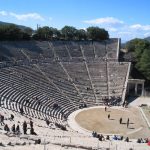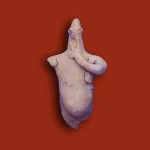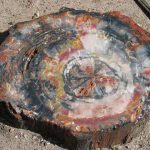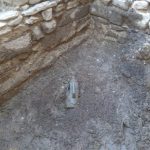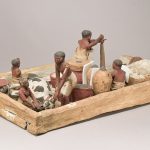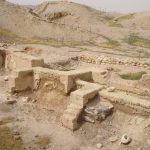Alexander the Great on Horseback
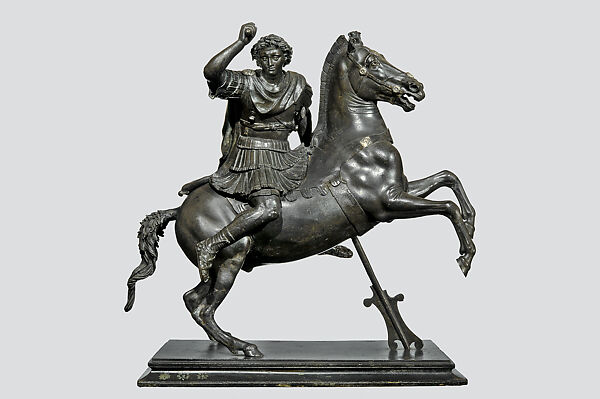
This bronze statuette is a Roman-era (Late Republican) sculpture dating from the 1st century BCE, now housed in the National Archaeological Museum of Naples (inventory no. 4996). It was discovered in multiple fragments during excavations in Herculaneum in October–November 1761, in the area beneath the ancient theatre near Casa dei Colli Mozzi.
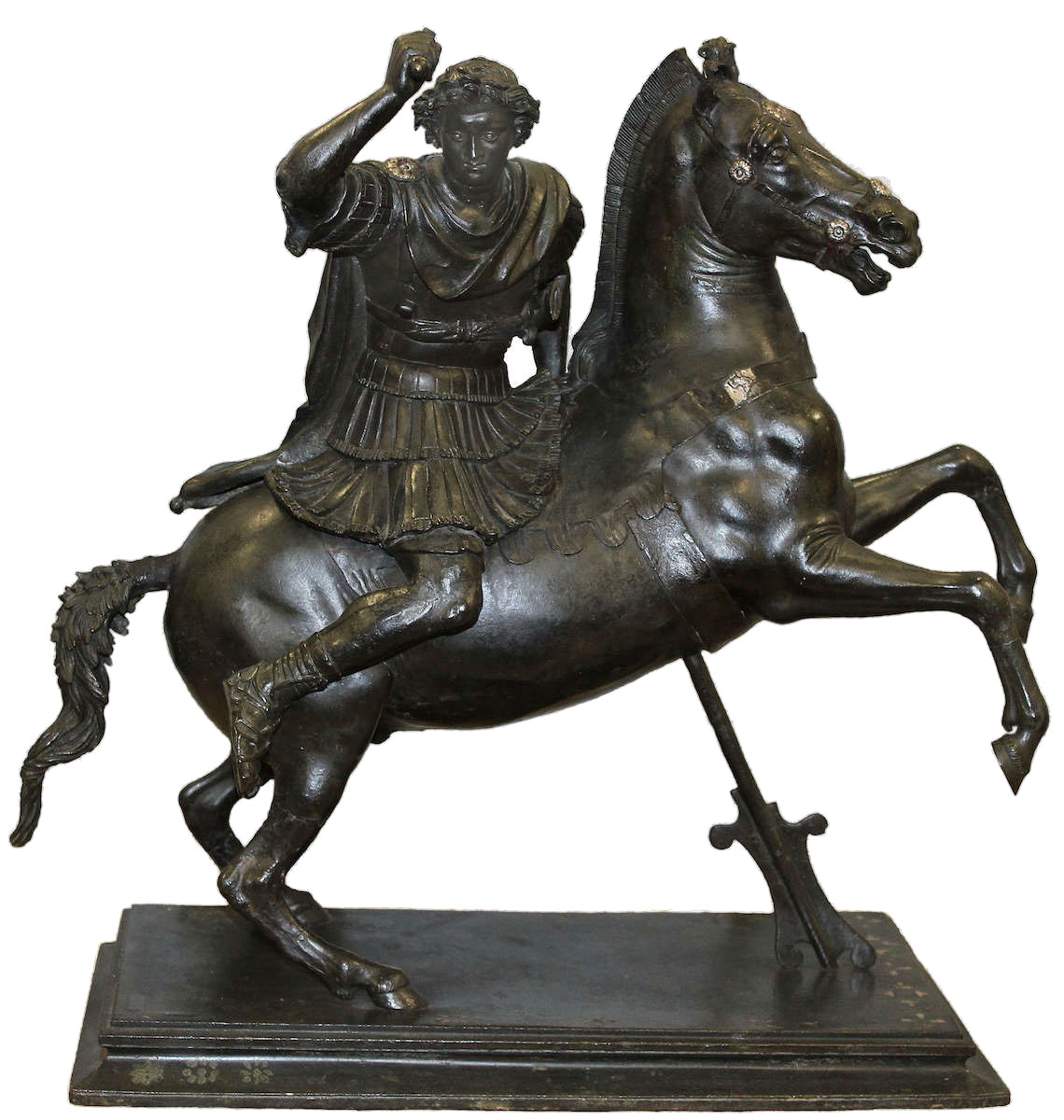
The restored height of the statuette is approximately 49 cm (about 19 inches), with a width of 47 cm and depth of 29 cm. It portrays Alexander the Great mounted on his horse Bucephalus, poised in a dynamic, martial stance. Noteworthy decorative details include silver inlays in the eyes of both rider and horse, the rosace fastening Alexander’s cloak, and a mask ornamenting the horse’s breastplate.
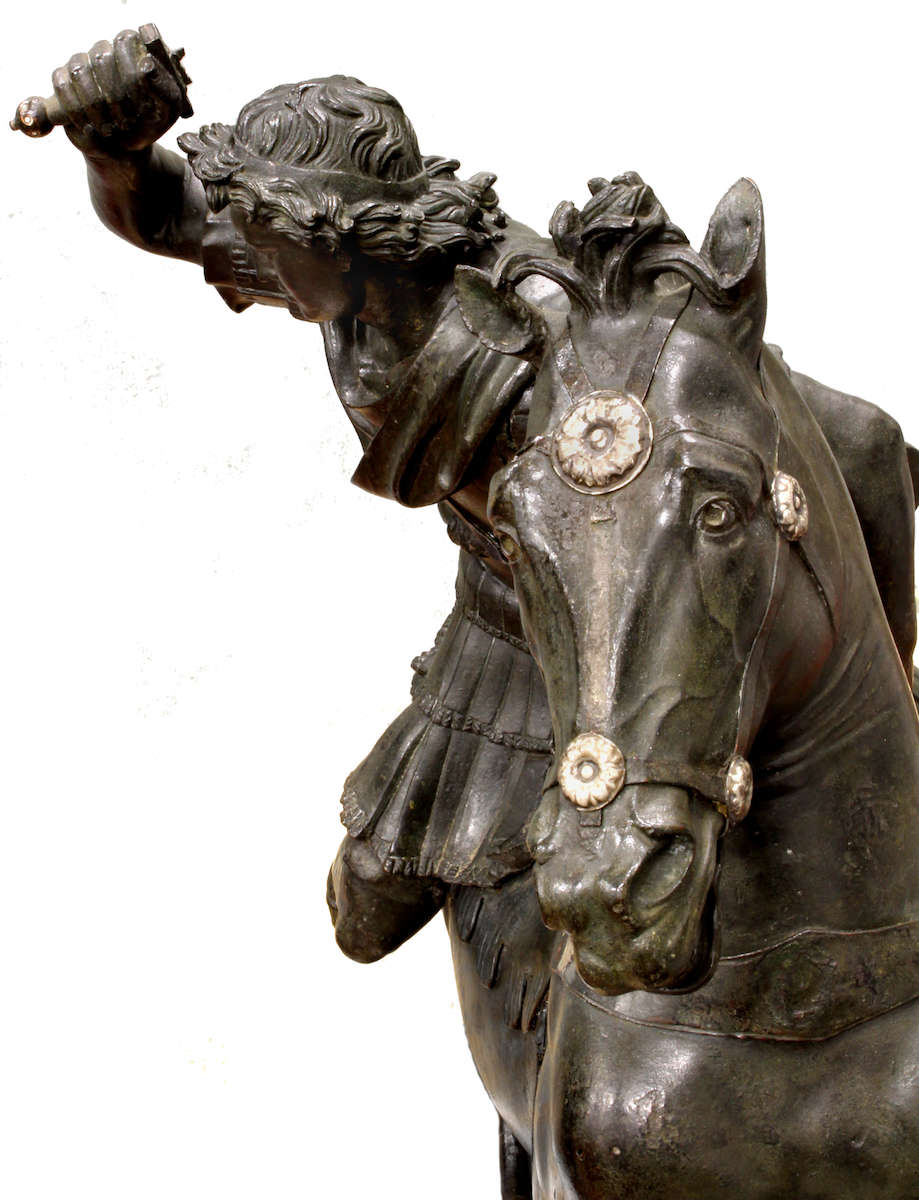
Following discovery, the statuette was meticulously restored at the Reale Fonderia of Portici, overseen by Camillo Paderni. Early restoration logs, including letters from art historian Johann Joachim Winckelmann, note missing parts such as the rider’s arm and the horse’s legs—which were later reassembled. The silver inlays and original base were also preserved.
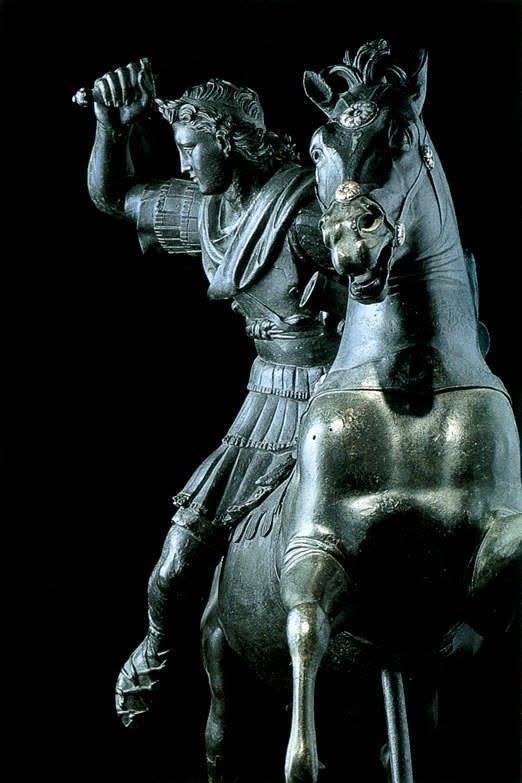
Upon completion, the statuette was prominently displayed in the Herculaneum Museum, then later in the Real Museo Borbonico in Naples by the early 19th century.
This sculpture is believed to be a miniature adaptation of a renowned Hellenistic bronze group by Lysippos, which Alexander had dedicated at the sanctuary of Zeus in Dion to honor his fallen companions at the Battle of the Granicus in 334 BCE. That original work was later transported to Rome during the Republican period.

The Herculaneum statuette may be part of a broader Roman reproduction cycle inspired by such Hellenistic prototypes, and similar equestrian bronzes (including those of Amazons and prancing horses) have also been discovered at the site.
Additionally, a similar-sized bronze statuette from the Metropolitan Museum of Art—also titled “Statuette of Alexander the Great on Horseback”—shares the same provenance: excavated from Herculaneum on October 22, 1761, later housed at Portici, and ultimately transferred to Naples’s main museum collections.
Source: The Metropolitan Museum of Art.

